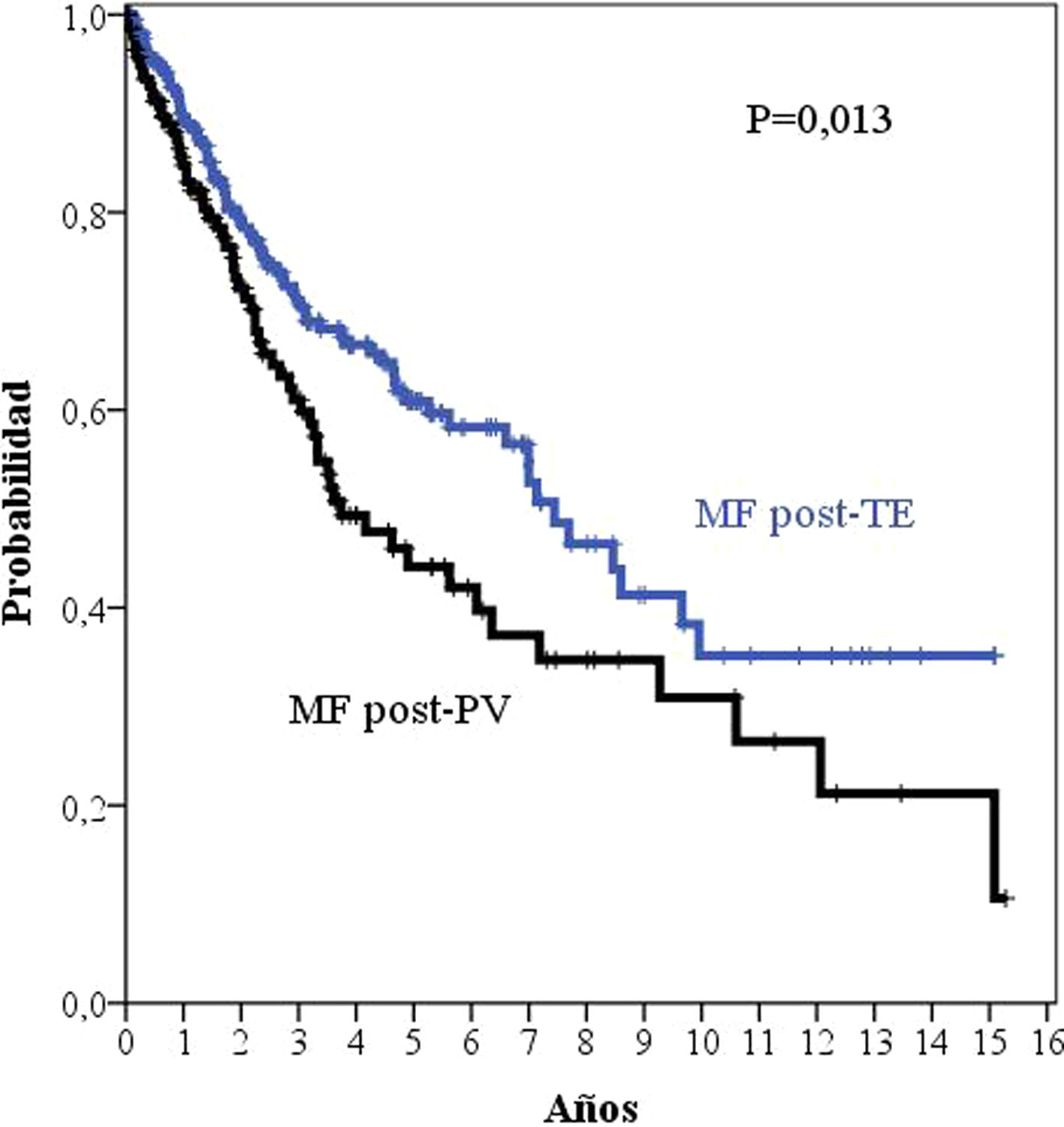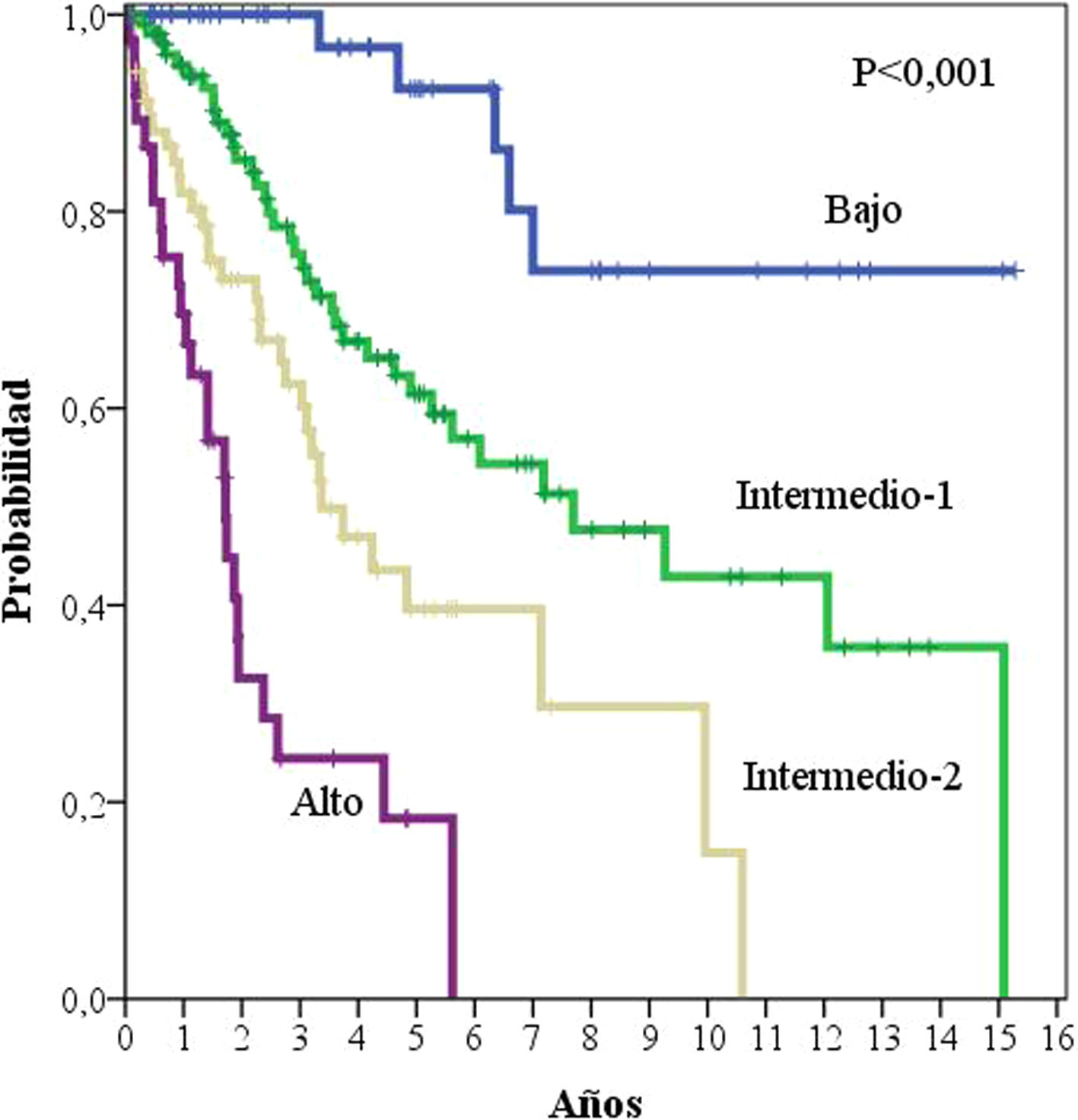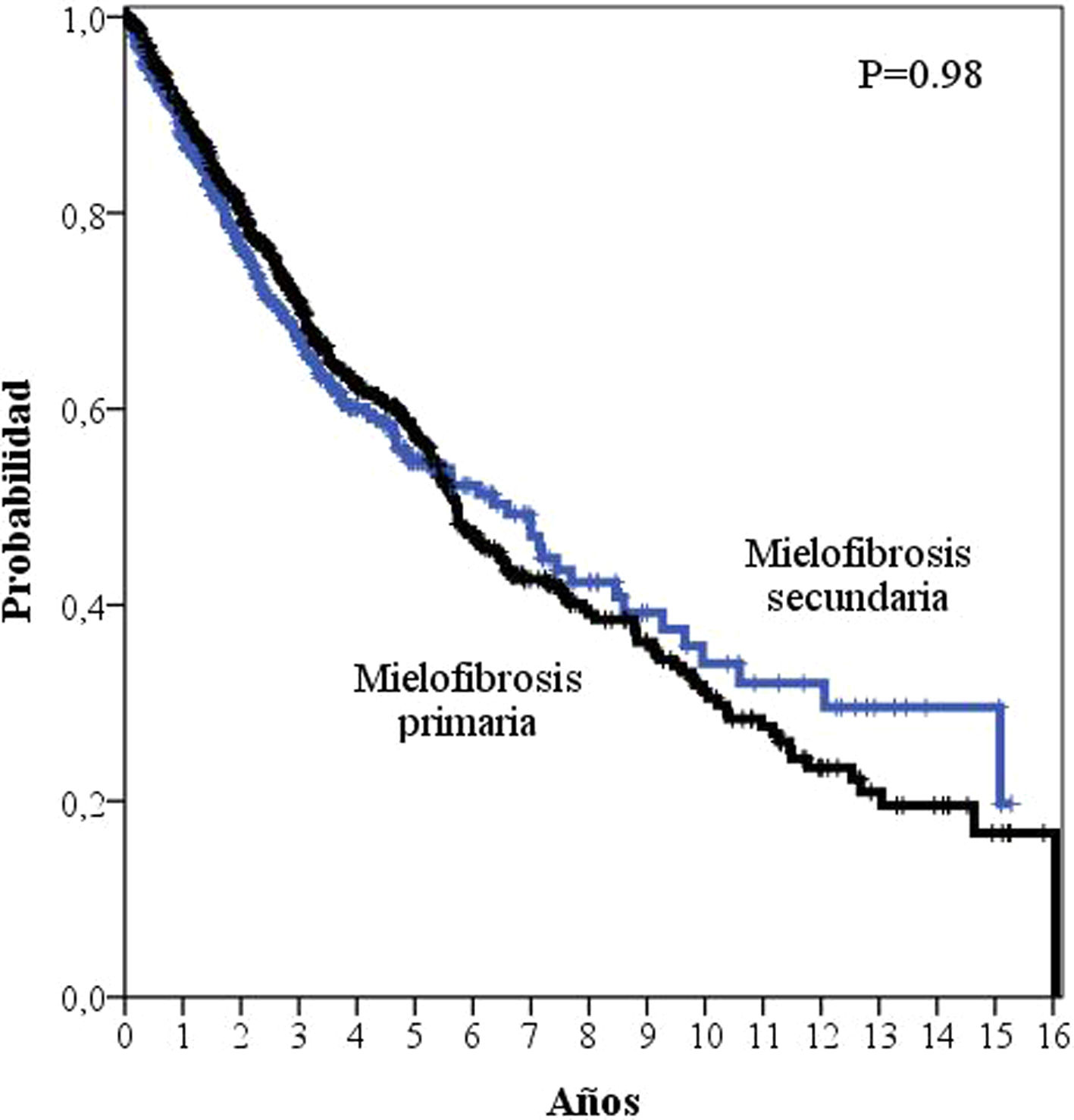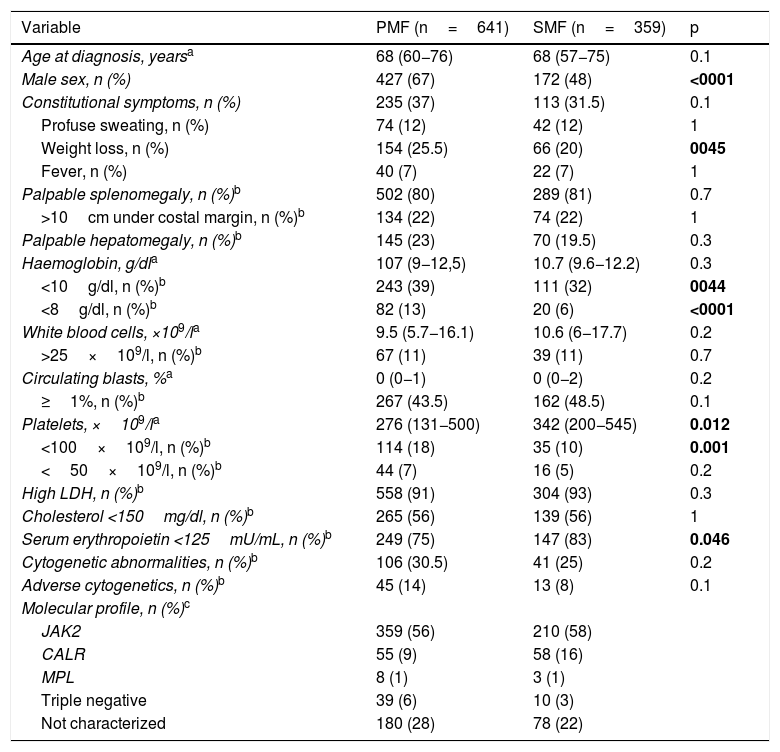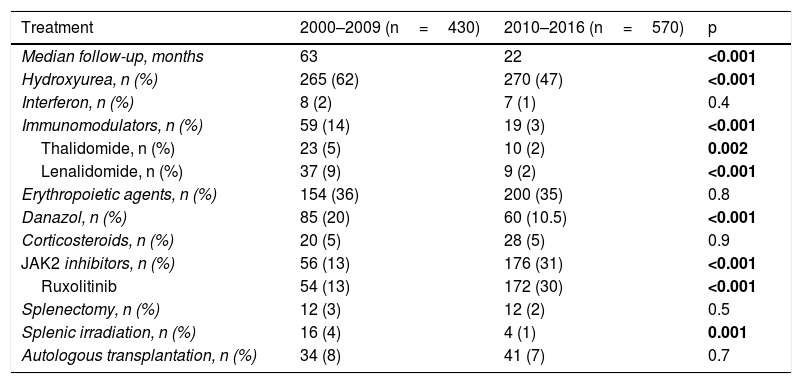Myelofibrosis is an infrequent chronic myeloproliferative neoplasm. We aimed to describe the clinico-biological characteristics, treatment, and evolutive course of myelofibrosis patients in Spain.
Material and methodsA total of 1000 patients from the Spanish Registry of Myelofibrosis diagnosed with primary (n=641) or secondary (n=359) myelofibrosis were analysed.
ResultsMedian age was 68 years. The frequency of constitutional symptoms, moderate to severe anaemia (Hb<10g/dL), and symptomatic splenomegaly was 35%, 36%, and 17%, respectively. The rate of thrombosis and haemorrhage was 1.96 and 1.6 events per 100 patient-years, respectively. The cumulative incidence of leukaemia at 10 years was of 15%. The most frequent therapies for the anaemia were the erythropoiesis stimulating agents and danazol. From 2010, a progressive increase in the use of ruxolitinib was noticed. A total of 7.5% of patients were transplanted. During the observation period, 42% of patients died mainly due to the clinical deterioration caused by myelofibrosis or leukaemic transformation. The median survival of the series was 5.7 years. Four different risk categories were identified by the IPSS: median survival was not reached in the low risk group and was 8.8 years, 5.3 years, and 2.8 years in the intermediate-1, intermediate-2, and high-risk groups, respectively.
ConclusionMyelofibrosis is a disabling condition mainly affecting elderly people. Its treatment is mostly driven by symptom control. Despite its clinical heterogeneity, several prognostic models are useful to select candidates for transplantation.
La mielofibrosis es una neoplasia mieloproliferativa crónica infrecuente. Nuestro objetivo fue describir las características clínico-biológicas, el tratamiento y el curso evolutivo de los pacientes con mielofibrosis en España.
Material y métodosSe analizaron 1.000 pacientes del Registro Español de Mielofibrosis diagnosticados de mielofibrosis primaria (n=641) o secundaria (n=359).
ResultadosLa mediana de edad era de 68 años. La frecuencia de sintomatología constitucional, anemia moderada o severa (Hb<10g/dl) y esplenomegalia sintomática fue del 35%, 36% y 17%, respectivamente. La incidencia de trombosis y hemorragia fue de 1,96 y 1,6 eventos por 100 años-paciente, respectivamente. La incidencia acumulada de leucemia fue del 15% a los 10 años. Para la anemia se emplearon principalmente agentes eritropoyéticos y danazol. A partir del 2010 se observó un incremento significativo del uso de ruxolitinib. Un 7,5% de los pacientes fue trasplantado. El 42% de los enfermos falleció, debido principalmente al deterioro clínico provocado por la mielofibrosis y a la transformación leucémica. La supervivencia mediana de la serie fue de 5,7 años. El IPSS identificó 4 grupos de riesgo: la supervivencia mediana no se alcanzó en el de bajo riesgo, mientras que fue de 8,8 años, 5,3 años y 2,8 años en los de riesgo intermedio-1, intermedio-2 y alto, respectivamente.
ConclusionesLa mielofibrosis es una enfermedad invalidante que afecta sobre todo a personas de edad avanzada y cuyo tratamiento es fundamentalmente sintomático. A pesar de su heterogeneidad clínica se dispone de modelos pronósticos útiles para la selección de candidatos a trasplante.









